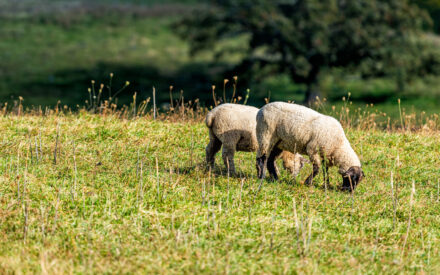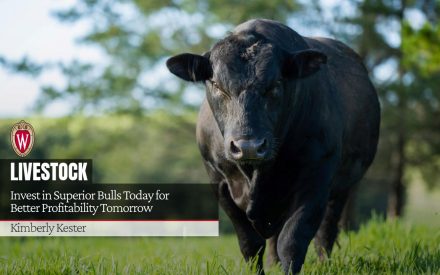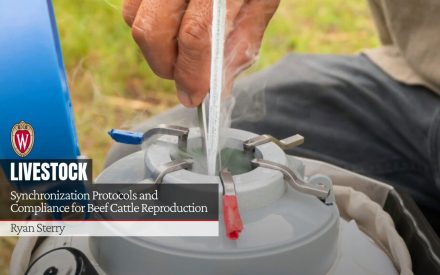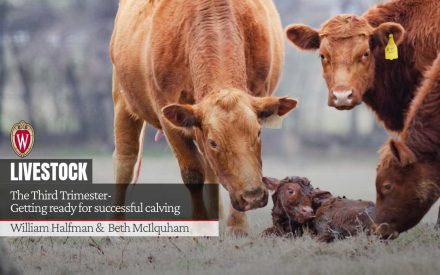If your pastures have an abundance of biennial or perennial weeds like spotted knapweed, wild parsnip, thistles, Canada thistle, and horsenettle, then fall is a good time to get a handle on these tough to control weeds.
During fall, these plants are translocating sugars into the root system to prepare for next spring’s re-growth. Fall application of systemic herbicides results in abundant translocation of the herbicide to the perennial parts of the plant (roots/rhizomes), which results in excellent weed control. Systemic herbicides enter the plant through its foliage and kill the plant by disrupting normal plant functions. Some common examples of systemic herbicides include 2,4-D, dicamba, glyphosate, and aminopyralid. While these herbicides can be effective at other times of the year, reduced control is often observed as products are applied when the plant is rapidly growing (e.g. spring) due to poor translocation of the herbicide to the roots/rhizomes below ground.
When targeting biennial plants, like wild parsnip and the biennial thistle species, it is important to focus efforts in their first-year growth stage during the fall. First-year growth habits of biennial plants are low growing rosettes. There is no point in wasting time and herbicide on the second-year growth stages (the tall upright flowering growth habit) of the biennial weeds in the fall, as they have already gone to seed and are dead or dying.
Fall control of perennial weeds uses the same approach as discussed above for biennials. Focus on the growing parts and leaves of the plants when applying herbicides.
There are several online resources for pasture owners to help correctly identify the different weeds in pastures and their growth stages. One example is the UW Weed Science Programs WeedID Tool. Pasture owners can also contact their local Extension Office for help in identifying weeds.
Spot applications of herbicide rather than broadcast spraying may save some money while controlling weeds if the infestations are isolated to certain areas of the fields. Take into consideration time and labor costs for spot versus broadcast spraying.
Several herbicides are labeled for controlling biennial and perennial weeds in the fall. For information to match herbicide options to the target weed species, pasture owners can take a look at the Forages Weed Control Section in Extension Publication A3546 Pest Management in Wisconsin Field Crops.
Some additional considerations to weed control efficacy, are grazing and harvest restrictions, and planting intervals if you plan on seeding legumes into the pasture. Pasture owners should always follow the label directions for rates and safety procedures for handling and applying herbicides.
All herbicides currently labeled for controlling broadleaf weeds in pastures will also affect desirable broadleaf plants like alfalfa, clovers, and legumes. This is where spot spraying can help maintain legumes in the pasture where weeds are only in localized areas. Legumes may need to be re-established after satisfactory weed control has been obtained.
At the time of herbicide application, it is important to make sure there is adequate above-ground foliage on the target weeds. Do not apply herbicide immediately after clipping the pasture and leave the weeds’ top growth for at least two weeks after application to allow good translocation of the herbicide through the plant. Systemic herbicides may be applied after a frost if the plant is still actively growing.
In summary, consider fall herbicide applications to reduce biennial and perennial pasture weeds. Identify the weeds to be targeted, understand their growth stage and timely apply the applicable herbicide at the correct rate. Read the labels of all products used and take measures to protect the environment and yourself from undesirable herbicide side-effects.
References
Jensen, Bryan; Liesch, P.J.; Nice, Glenn; Renz, Mark; Smith, Damon; Werle, Rodrigo. 2020. Pest Management in Wisconsin Field Crops 2020,
Hartzler, Bob; Anderson, Meaghan. Fall Weed Control in Pastures. Iowa State University Integrated Crop Management, Access date: August 4, 2020.
Renz, Mark. Which Thistle is in my pasture and how to control it… Access date: August 19, 2020
Renz, Mark. Canada thistle management in pastures. Access date August 19, 2020
Download Article

 Warm season grass forage option
Warm season grass forage option Invest in Superior Bulls Today for Better Profitability Tomorrow
Invest in Superior Bulls Today for Better Profitability Tomorrow Synchronization Protocols and Compliance for Beef Cattle Reproduction
Synchronization Protocols and Compliance for Beef Cattle Reproduction The Third Trimester- Getting ready for successful calving
The Third Trimester- Getting ready for successful calving


